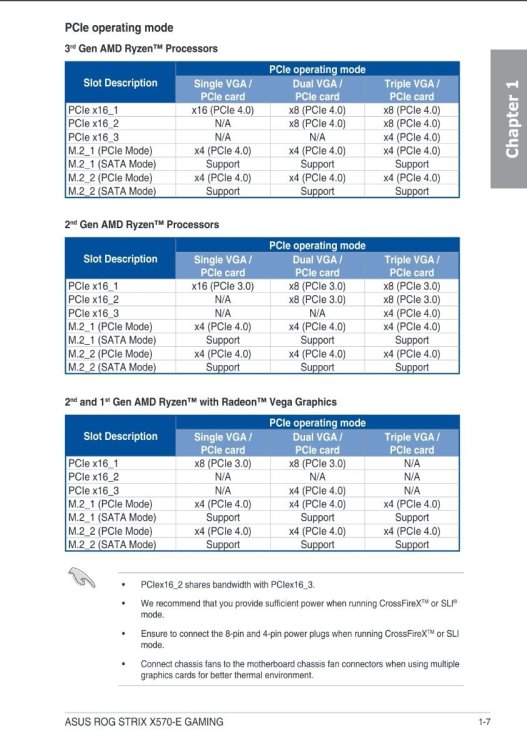-
Posts
447 -
Joined
-
Last visited
-
Days Won
16
Content Type
Profiles
Forums
Articles
Blogs
Store
Everything posted by PsychoWards
-
Hey, Yes this should work fine. Just the obligatory warning that those SFP+ Modules with RJ45 are running hot and require a lot more energy compared to fibre optics. So make sure you have airflow/cooling on your switch.
-
Hey, Yes Realtek doesn't play nice with Hexos and WiFi is not supported at all. If you are looking for a PCIe NIC go with an Intel NIC, if you want to have 10Gbps, go with sth. Like an Intel X520 or X540 depending if you want SFP+(X520) or RJ45 (X540)
-

feature-request An easy way to pull data from another NAS
PsychoWards replied to EviTRea's topic in Roadmap & Feature Requests
This would require to make setting up the rsync server easier, but then again the team could only make the receiver side easier, but the user would still need to figure out how to use rsync on their existing NAS. -
Hey @Exodia, unfortunately I cannot comment on this since I'm not using Truenas/Hexos to host my apps, maybe someone else can comment on this instead.
-
I just got confirmation from the JetKVM support, that USB-C PD is indeed unsupported by the black splitter.
-
Hey, Rockstor uses Btrfs and Raid5/6 (equal to RaidZ1/RaidZ2 in ZFS) are unstable and strongly adviced against being used with Btrfs. While Hexos uses ZFS which supports RaidZ1 (out of the Box) and RaidZ2/3 via Truenas GUI which are rock solid. Truenas also has a large community where you can get help and is also open source. 🙂 I would only consider Rockstor when going for a mirrored setup (with 2 data drives max) but with 3 drives + I wouldn't risk my data by using Btrfs RAID5/6.
-
Yes 🙂 Depends on what your needs are, but as apps in truenas would probably be the easiest way.
-
Hey, A couple of remarks: The selected GPU is very week and cannot handle 4k transcoding. If you are going for Media Center you need a lot more storage (you can get significant more storage with HDDs compared to SSDs for the same price). You should probably look at an Intel CPU (their CPUs are shit for gaming but man, Intel QuickSync on the on-board GPU is one heck of a power house for transcoding). This way you don't need a dedicated GPU and can still transcode. Your currently selected Motherboard has a Realtek NIC, Realtek NICs are mostly not supported and/or are not working correctly with Hexos/Truenas so if you choose a MoBo with a Realtek NIC you also need another (preferably Intel NIC) to get any network connections. In combination with the HBA card and a dedicated GPU (if you are going that path) you need to make sure to have enough PCIe slots and PCIe Lanes for those 3 extansion cards to work properly.
-
Hey, this is only true for your specific CPU & MoBo combi but not as a general statement. According to your MoBo Manual, once you use 2 PCIe slots the bandwidth from the first slot drops from x16 to x8. And I suppose the ASUS card is using 4 PCIe lanes per SSD therefor with 8 lines you can only use 2 SSDs. However if the first PCIe slot drops to x8 depends on the CPU generation and chipset, lots of the newer boards don't have this issue, Server Motherboards usually have more PCIe lanes then you will ever need and even some older platform don't have this problem neither. So yes in your case it is unfortunately not possible to use the full 4 SSDs from the card in combination with a HBA card (due to HW limitations) , but for other setups this might not be a problem.
-
That is a very valid question. Doable without reverse proxy ? Probably with some tinkering and changing Truenas GUI ports. Should you do it? Definitely not.
-
Your best bet when using Hexos will be something like Nextcloud. This would be my recommendation but have a look at it. Also, depending on how many people are trying to download or stream the audio file, make sure your upload speed is fast enough to handle the requests, less likely to be an issue with audio files but very much an issue with video files.
-
Hey, Yes this is possible, but requires some setup. You have to manually install Vaultwarden, there is no 1 click app, and then you also have to install a reverse proxy (again no 1 click app) which is redirecting the concerned traffic to your Vaultwarden server. This does require that your subdomain is already (and always will) point to your router/proxy manager. This is not a trivial setup but it's not impossible neither and there are many guides to get this running properly and you should also read into cloudflare, fail2ban or crowdsec and other security options to protect your then exposed server/setup.
-
I did this test as well, w/o splitter with USB-C PD the JetKVM turns on, with the splitter it doesn't.
-
Hey I did double check this, it's correctly connected to the correct plug. But you also have the same splitter as the YT reviewers, mine's different and I am now convinced that indeed the splitter is the issue.
-
USB-A is working because it's always delivering 5V 500mA (or 900mA for USB3.0) without needing to negotiate. And my PSUs seem to all require USB-C PD negotiation which my included splitter doesn't seem to support. But none of the reviewers mentioned it and their splitters also has a different colour, there might be different splitters included in the package and some might support negotiation or their PSU doesn't require PD negotiation, there are a few possibilities on why it might be working for others. 🙂
-
I just tried different cables and PSUs and the splitter is not working with anything which requires the mandatory USB-C power delivery negotiation. It's working correctly when directly connected the the JetKVM however with the splitter it's no longer working... So USB-A PSU it is in my case.
-
No I did not, I will try this tomorrow. Yes, latest update is installed, but I'm on the stable channel
-
I tried 2 different power supplies and a power bank using the included usb c splitter, none of them worked 😞
-
What absolutely annoys me the most is that it needs an USB-A to USB-C cable, USB-C to USB-C is not working for power delivery. 🤦♂️🤬
-
I got mine yesterday, tested them quickly and they are working. Now I only need to wait for retail to order the Power On/Off accessory
-
The Blog post explains that the team had to expand and increase the infrastructure to cope with the success and that this delayed the roadmap, but that an update is coming this Q2.
-
First of all, yes it's possible to connect both PC and Server via Ethernet cable but you have to setup everything yourself (static IP address) and share your Internet from another NIC or WiFi to your server. However, University Networks tend to be very restrictive, I'm not sure that the Hexos Dashboard will detect the server and you might not be able to use Hexos but only the Truenas GUI. I am also uncertain if you are allowed to hook up a server to their network or if you want to do this, because depending on how you configure it, everyone on the network might be able to reach it.
-
Best way forward is probably going to be a fresh install using the Hexos ISO (once pool import is supported) and importing your Core Config and following this guide: https://www.truenas.com/docs/scale/24.10/gettingstarted/migrate/migratingfromcore/
-
I think I would use 1 VM for all dockers, especially since you are a bit limited with the memory. I don't see a big advantage of splitting it in your case. Maybe you could split it in a system critical VM (running Opnsense, PiHole, Unbound, NPM etc.) and a 2. One running apps which you can play with and where there is no real impact to the network if it goes down?





